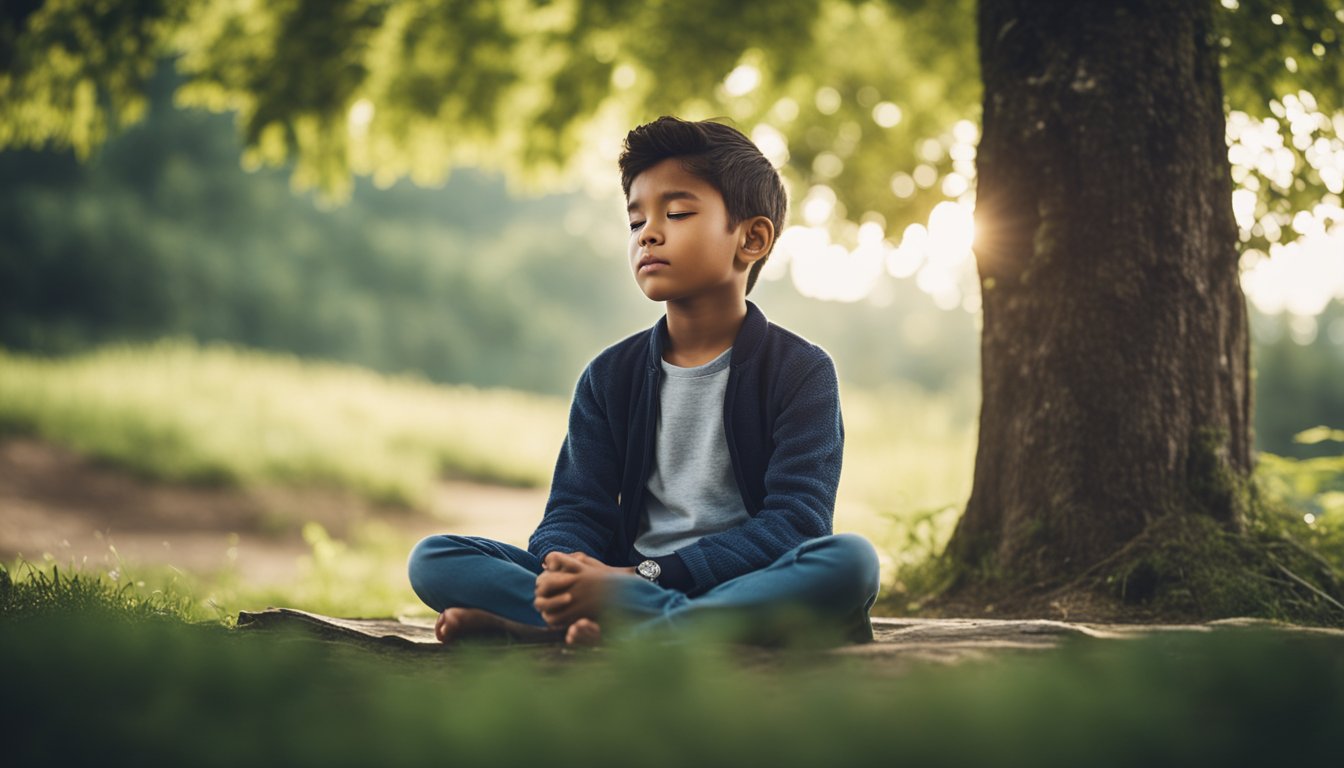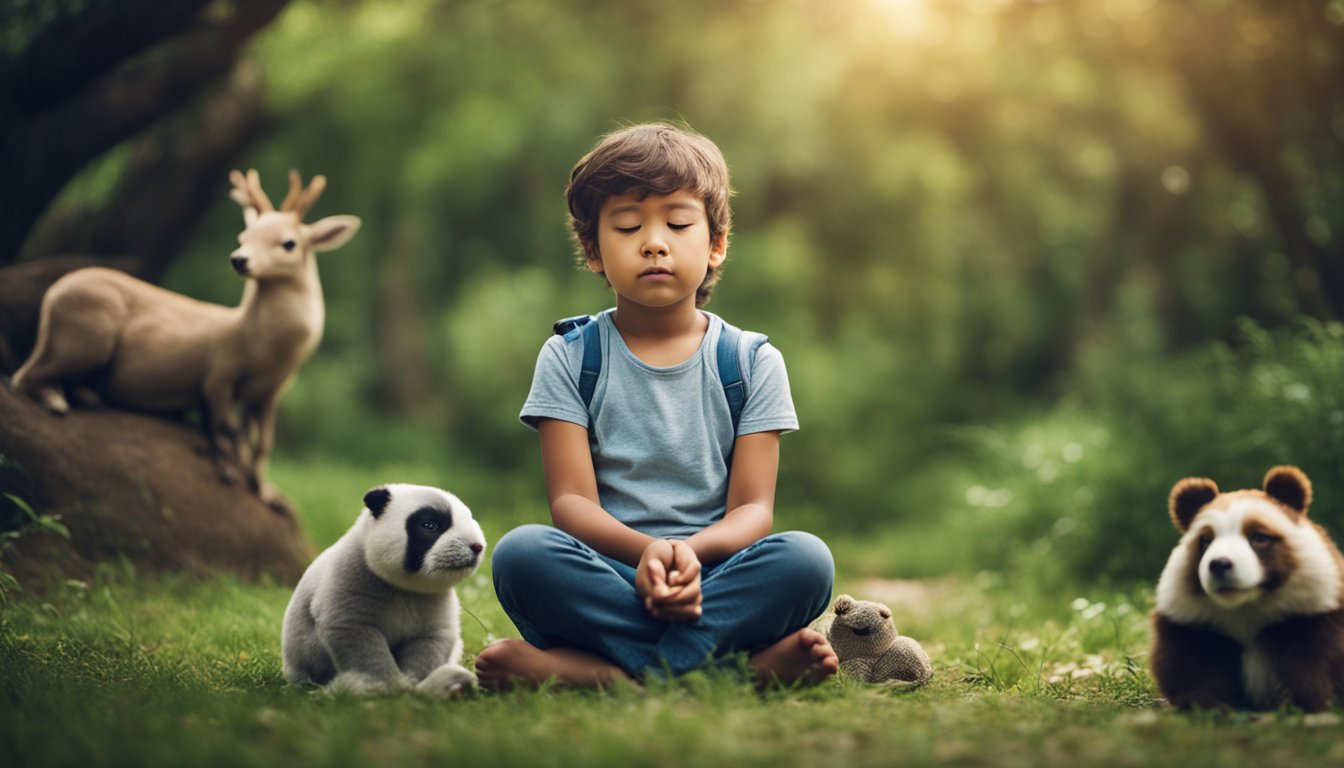Late updated: 10 Feb 2025 09:02
Written by:
Embracing Mindfulness Techniques For Children At Home: A Practical Guide
Welcoming mindfulness practices into our homes can significantly enhance a child's mental well-being and emotional stability. Mindfulness techniques, such as mindful breathing and body scans, enable children to focus on the present moment, helping to alleviate anxiety and improve concentration. The activities are not only simple to integrate into daily routines but are also engaging for children, making them an excellent tool for fostering emotional regulation.

At home, parents can actively participate in mindfulness exercises alongside their children—this shared experience strengthens the parent-child bond and sets a positive example for children to emulate. As we explore these techniques, it becomes clear that mindfulness is not merely an activity but a valuable life skill that nurtures focus, patience, and tranquillity. By offering structured yet flexible strategies, parents can seamlessly incorporate these practices into everyday life.
Key Takeaways
- Mindfulness supports children's mental health and emotional regulation.
- Parents joining mindfulness activities deepen the parent-child connection.
- Integrating mindfulness into daily life fosters lasting benefits.
Fundamentals of Mindfulness for Children

Mindfulness for children is an essential component of fostering mental well-being and improving focus. By engaging young minds through simple exercises and daily routines, we can nurture self-awareness, concentration, and resilience.
Understanding Mindfulness
Mindfulness involves being present in the moment with full awareness, and it can be introduced to children through accessible practices. It focuses on paying attention to one's experiences without judgement. By teaching mindfulness, we offer children tools to better understand their emotions and reactions. This understanding can extend beyond just calming the mind to enhancing overall emotional health. The concept itself is not complex but needs to be communicated in a child-friendly manner. Mindfulness can be part of early childhood education, tailored specifically to suit children's developmental stages.
Benefits and Importance
Practising mindfulness brings multiple benefits to children, including stress reduction and anxiety management. It improves attention span and concentration, allowing kids to focus better on their daily tasks. As they engage in mindfulness practices, children develop greater self-awareness and emotional stability, fostering resilience in handling life's challenges. This can be crucial for their growth, leading to improved mental well-being. By incorporating mindful activities, we can support their journey to being more centred and balanced. The positive effects on emotional health make mindfulness a foundational element in addressing both common and unique stressors faced by children.
Mindfulness Techniques and Activities
Mindfulness exercises for children are varied and engaging. Breathing exercises, such as intentional breathing or deep breathing, introduce the basics of mindfulness through rhythmic inhaling and exhaling. Mindful movement, like simple stretching, encourages focus on the body and the present moment. Mindful colouring and mindful eating offer sensory explorations that heighten awareness. Each activity should be designed to be fun and age-appropriate. Incorporating these into a child's daily routine makes mindfulness an accessible part of their life. These practices are not just exercises; they are pathways that promote calm and positive thinking, essential for developing well-rounded young individuals.
Integrating Mindfulness into Daily Life

Incorporating mindfulness into daily life provides numerous benefits for children, helping them manage stress, enhance emotional well-being, and build empathetic social skills. By embedding these techniques into daily routines, we support our children's growth and mental health.
Incorporation into Everyday Routines
Setting aside small, regular moments for mindfulness is an excellent way to start. This can include morning breathing exercises or evening mindfulness meditation as part of the bedtime routine. By keeping these practices consistent, children with anxiety or ADHD can find a sense of calm in their hectic day.
Implement activities like mindful awareness during meals. Encourage children to savour each bite and appreciate the effort that went into preparing the meal. Practising gratitude during family discussions fosters a positive outlook on life.
Tools and Resources for Support
Mindfulness apps can be excellent resources for parents and children alike. Applications designed for children can turn mindfulness exercises into engaging activities. They often include features such as guided imagery and relaxation exercises tailored for different ages and needs.
We should explore mindfulness worksheets available online to reinforce these practices at home. These worksheets can focus on areas such as self-care and help in tracking progress, providing a tangible structure to mindfulness activities.
Creating a Supportive Environment
A supportive environment is crucial for mindfulness to thrive. Let's create a space in our homes dedicated to relaxation, free from distractions. Soft cushions, calming colours, or nature sounds can enhance this space, making it inviting for children and parents.
Building empathy and compassion among family members plays a vital role. By encouraging open conversations about feelings, we empower children to express themselves. Teaching them to listen actively enhances their social skills and emotional intelligence.
Regularly sharing mindfulness practices with our children strengthens family bonds and promotes emotional well-being for everyone involved. By consistently integrating these small yet impactful techniques into daily life, we help our children navigate the world with greater awareness and resilience.
Frequently Asked Questions
Mindfulness can be an effective tool for promoting emotional awareness and resilience in children. This section provides practical guidance on introducing and integrating mindfulness exercises into daily family routines, focusing on age-appropriate activities and evaluating their impact on wellbeing.
What mindfulness exercises can be incorporated into a child’s daily routine at home?
Exercises like deep breathing, yoga, and mindful movement can be easily integrated. These activities help children focus and manage emotions. Simple practices such as blowing bubbles can also encourage present-moment awareness.
How can mindfulness be effectively introduced to children of various ages?
To introduce mindfulness, tailor activities to the child's age. For younger children, games and storytelling can be utilised. Teens might benefit from journaling or more structured meditation. Consistent practice and modelling behaviours are key.
In what ways can families integrate mindfulness practices into their shared activities?
Families can practise mindfulness together by sharing activities like mindful walks or creating quiet time for meditation. Cooking or art projects are opportunities to engage in mindful attention and foster connection.
What are some age-appropriate mindfulness activities suitable for children’s development?
For younger children, activities like belly breathing or guided visualisations can be effective. Older children might enjoy activities that challenge their focus, such as mindful music listening or tai chi.
How can parents and educators assess the impact of mindfulness on a child's wellbeing?
Observing behavioural changes, improved focus, and emotional regulation can indicate positive outcomes. Regular check-ins and discussions with the child allow us to evaluate their feelings towards mindfulness practices.
What resources are available for downloading or printing mindfulness activities for children?
Numerous online resources offer printable guides and worksheets tailored for children’s mindfulness activities. Educational websites often provide free access or downloads to support parents and educators in their mindfulness journey.
